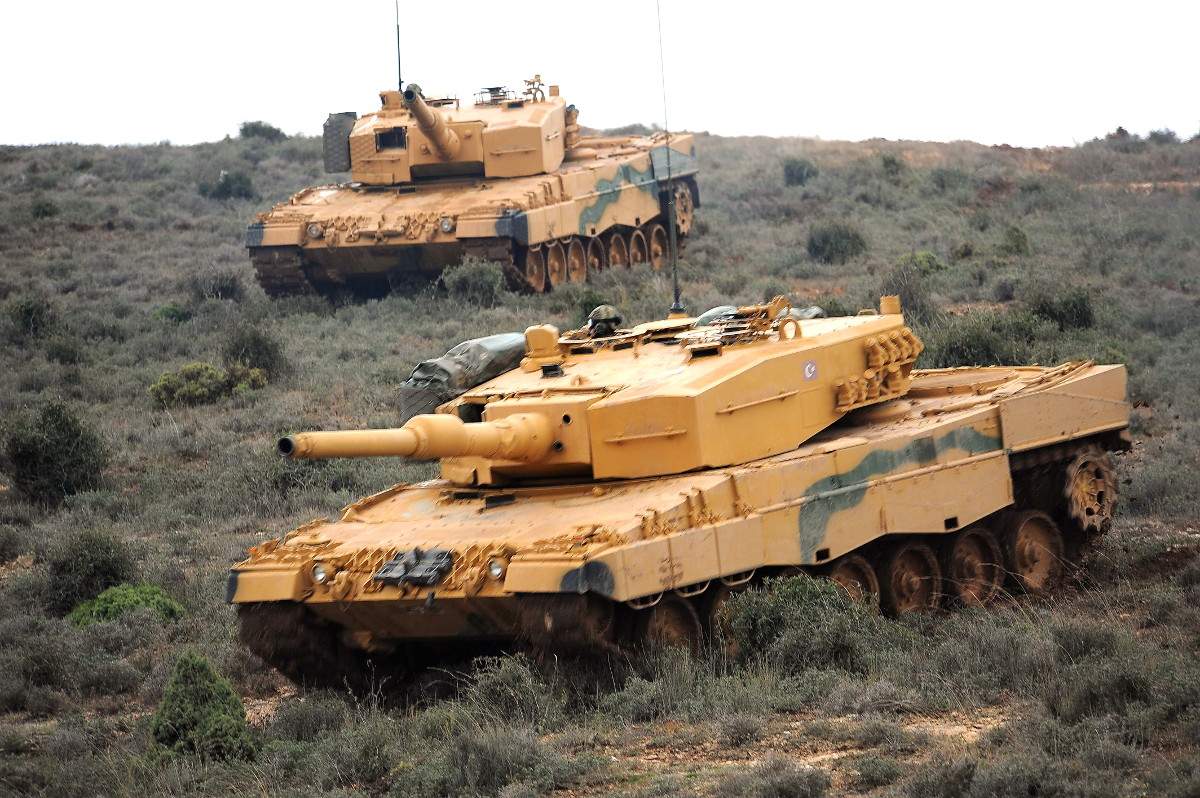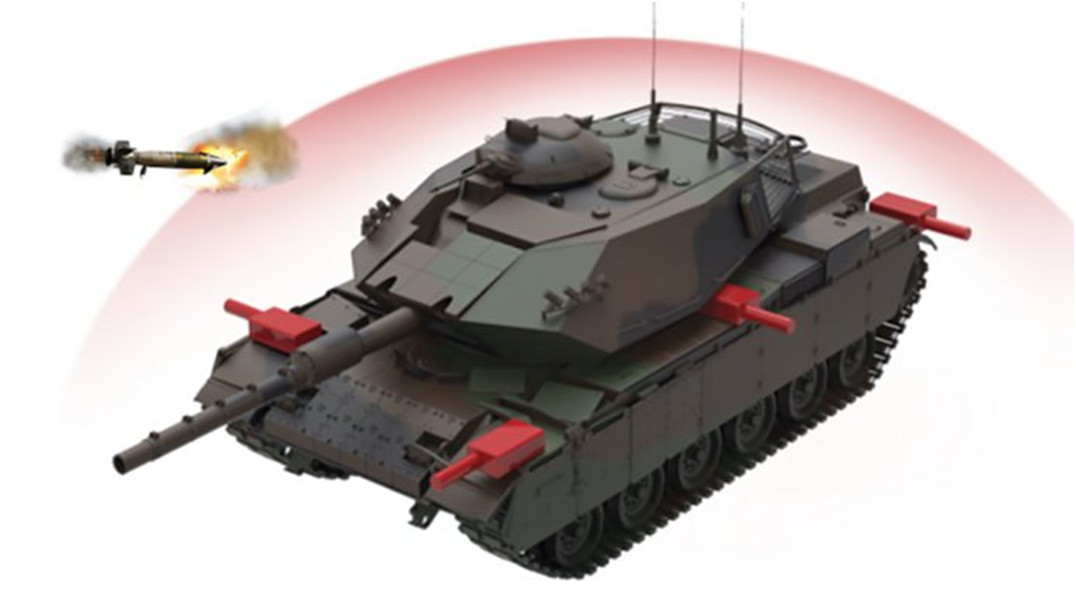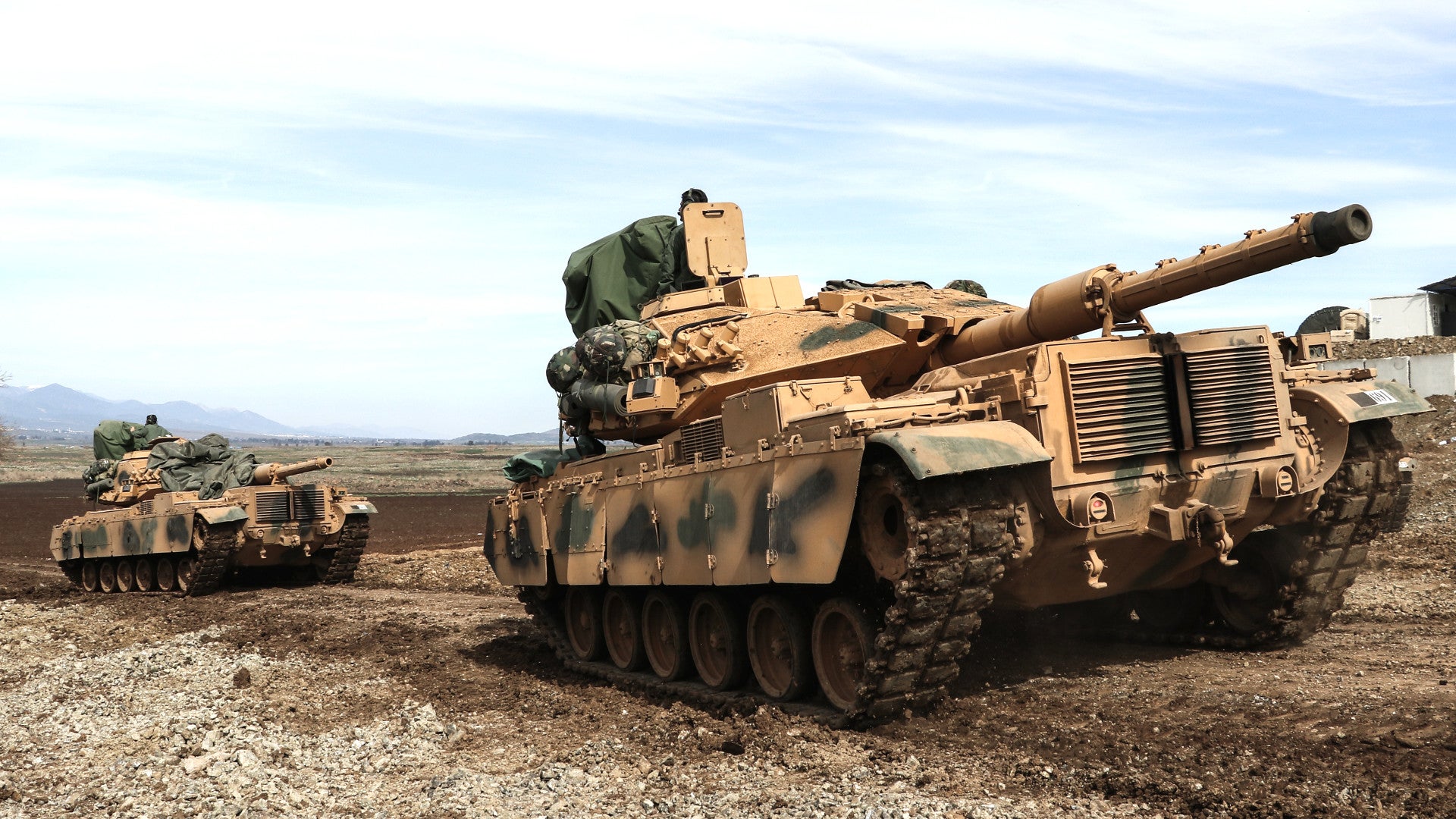Turkey is racing to add active protection systems to its tanks as its armored units continue to suffer losses at the hands Kurdish rebels. But with relations strained between Turkish authorities and many of their traditional partners, including the United States, Israel, and Germany, the government in Ankara has now turned to a Ukrainian firm to help supply the new defensive equipment.
According to a report by Defense Update, the Turkish government recently put out an urgent request for 120 complete active protection systems to go on M60A3, M60T, and Leopard 2A4 tanks. In response, Turkish defense contractor Aselsan obtained a license from Ukraine’s Microtek to produce a version of their Zaslon-L system, which it calls the Akkor Pulat. Aselsan’s own Akkor system is still in development after nearly a decade of work.
In February 2018, Turkey’s Defense Minister Nurettin Canikli said that Microtek was still finishing testing of the Zaslon-L in Ukraine. Afterwards, Aselsan will begin working to integrate the system onto Turkish tanks. It’s not clear how long it will take before the first tanks with an operational active protection system will reach units in the field.
The 120 systems will only cover a small portion of the country’s more than 600 American-made M60A3s and upgraded M60Ts and more than 300 German-built Leopard 2A4s, as well. They will likely go to tanks Turkey has committed to its intervention in Syria or has deployed on domestic operations against Kurdish militants.

Turkey appears to have chosen the Ukrainian setup in no small part because it represents a relatively easy to install option. Zaslon-L is a so-called “hard-kill” system that consists of a number of countermeasure modules and the necessary cables to connect them to a central control unit.
Each one of the modules is a self-contained unit, with both a radar sensor to detect incoming anti-tank rockets or guided missiles and a high explosive fragmentation charge to neutralize them before they hit the vehicle. Microtek says the system can have as many modules as a customer deems appropriate, but Aselsan says the Akkor Pulat variant will have six in total, one facing forward, another pointing backwards, and two on each side of the tank.

Turkish tankers, who are presently facing opponents armed with Russian, Iranian, and American-made anti-tank guided missiles in Syria, are no doubt eager to get this added defensive suite. Kurdish fighters have claimed to have damaged or destroyed a number of M60s and Leopard 2A4s since Turkey’s intervention in the far northwestern Afrin region began in January 2018.

It’s not the first time Turkey’s armored formations have run into trouble in Syria, either. In 2016, the country launched another foray into Syria, but further to the east, engaging both Kurdish groups and ISIS. The terrorist group claimed to have destroyed between eight and 10 Turkish tanks over the course of that operation.
Guided anti-tank missiles and shoulder-fired unguided anti-tank weapons are only continuing to proliferate more widely among nation state and non-state actors in general. Newer weapons, such as Russia’s RPG-30, are now incorporating features to try and defeat present generation active protection systems, as well.

But the Akkor Pulat’s relatively simplicity and ease of installation will likely come at the cost of reduced effectiveness compared to other active protection systems on the market. Each module can engage just one projectile, which would leave the front and rear aspects vulnerable after a single use or to an attack involving multiple rockets or missiles.
Microtek designed the units to be disposable, which means crews will need to replace a module in its entirety after it detonates, something that could be difficult to do in the field. The original, full-size Zaslon system uses reloadable modules with two countermeasure charges each.
The video below shows the features of Microtek’s standard Zaslon system and the company’s separate Duplet explosive reactive armor suite.

Turkey already plans to add additional defensive measures to its tanks in addition to Akkor Pulat, which could help mitigate some of these limitations. According to Defense Update, Turkish tanks may also get explosive reactive armor to blow up incoming rockets and missiles, stand-off bar or slat armor to detonate them prematurely, or automatic smoke grenade launchers to obscure the tank against enemy personnel using optically aimed and guided weapons.
Unfortunately, none of this will change the fact that the cylindrical explosive charges are also dangerous to any who happens to be within 1,300 feet when they detonate. This means that the Akkor Pulat might be able to protect the tank, but poses a real danger to any nearby friendly infantry or innocent civilians caught in the crossfire.
The video below shows tests of the Zaslon active protection system, giving a good sense of how violently the countermeasures explode.

Those escorting troops are essential to helping protect the tank from getting ambushed or otherwise overwhelmed, especially in dense urban areas. The vehicle’s crew can use the control box to turn off certain modules to reduce the hazard the system poses to friendly forces, but would leave those areas without any added protection as a result.
This has long been an inherent issue with hard-kill active protection systems and one that has historically limited the more widespread adoption of these types of defenses. But Turkey might not have a lot of other options, though.
Turkish President Recep Tayyip Erdoğan’s increasingly authoritarian nature, including a massive crackdown against political opponents following an attempted coup in 2016, along with the country’s increasingly assertive foreign policy had caused an increasing rift with traditional allies, including fellow NATO members the United States and Germany. The government in Ankara has also seen steadily strained relations with Israel, another long-time partner.
This has increasingly closed off Turkey’s access to defense contractors in those countries, including Israel’s Rafael and Germany’s Rheinmetall, both of whom make advanced active protection systems with multiple sensors, failsafes, and other safety features. The U.S. Army is now buying Rafael’s Trophy system for its own M1 Abrams tanks, a major vote of confidence in that system.

In January 2018, the German government announced it would consider delaying allowing Turkey to send its Leopard 2A4s back to the manufacturer to recieve upgrades, including improved protection against mines and improvised explosive devices. This did not come to pass, however, likely in part due to Turkey’s decision to release a Turkish-German journalist Deniz Yücel, who it had arrested on charges of spreading propaganda and inciting hatred after he had criticized Erdoğan and his government.
It’s still somewhat curious that Turkey decided to partner with a Ukrainian supplier when shopping for active protection systems given Turkey’s growing ties with Russia. The Kremlin is actively supporting a separatist insurgency fighting the government in Kiev and is illegally occupying Ukraine’s Crimea region despite international censure.
We don’t know whether or not Turkish authorities considered purchasing the Russian Arena hard-kill active protection system before selecting a locally-made version of Zaslon-L. Though typically found on Russian-made tanks, manufacturer KBM does offer an export-oriented Arena-E variant that would theoretically work on any armored vehicle.

However the Turkish government’s final decision was made, some of the country’s American and German tanks fighting in Syria look set to get a Ukrainian-designed active protection system in the near future.
Contact the author: joe@thedrive.com
